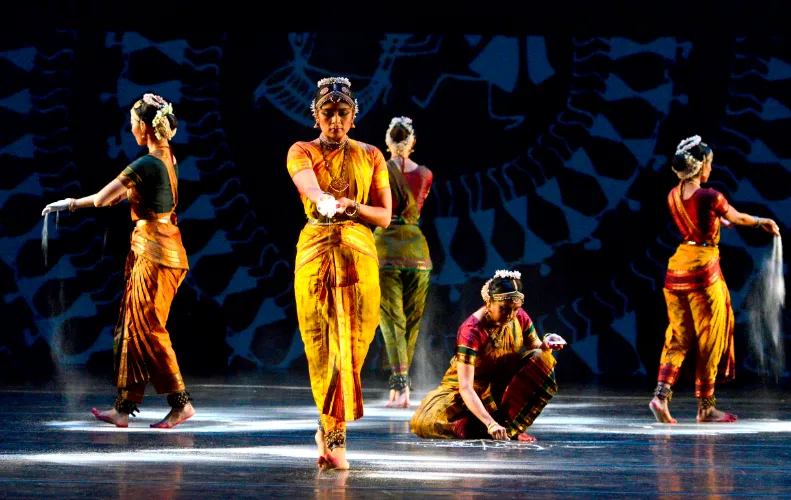
The rich tapestry of Filipino culture is often overshadowed by modern innovations and western influences. However, many ancient traditions still thrive, passed down through generations and seamlessly woven into daily life. While the Ancient Illuminati Code might shed light on many historic mysteries worldwide, the Philippines has its own set of traditions that still resonate today. Let’s dive deep into the heart of Filipino culture and unravel these timeless practices.
1. Pista ng Bayan – Town Festivals
Almost every town or barangay in the Philippines boasts its festival, celebrating their patron saints, historical events, or local produce. From the colorful masks of MassKara to the dance of the Sinulog, these events echo the Philippines’ long history of blending indigenous practices with colonial influences.
2. Bayanihan – Community Spirit
The term ‘Bayanihan’ reflects the spirit of communal unity and cooperation. Traditionally, it involved neighbors helping a relocating family move their home to a new place. While this specific practice might seem outdated, the essence of Bayanihan is still alive. Communities still come together during times of need or celebration.
3. Harana – Serenading
Harana, a romantic serenade, dates back to the Spanish colonial era. A man, backed by his friends, serenades the woman he is courting beneath her window. While modern technology and changing social norms have impacted this tradition, pockets of the country still appreciate this ancient gesture of love and affection.
4. Mano Po – Respecting Elders
A simple gesture where younger people take the hand of their elders to their forehead as a sign of respect. This daily ritual, deeply rooted in Filipino families, signifies respect for wisdom and experience.
5. Pamamanhikan – Pre-wedding Ritual
Before a man and woman marry, the groom-to-be, accompanied by his family, visits the bride’s home. It’s a formal way of asking the bride’s parents for their daughter’s hand in marriage. Amidst evolving matrimonial norms, this practice is a testament to the importance of family in Filipino culture.
6. Pahiyas Festival
Celebrated every May in Lucban, Quezon, the Pahiyas festival honors San Isidro Labrador, the patron saint of farmers. Residents adorn their homes with colorful, edible decorations like rice, fruits, and vegetables. It beautifully captures the country’s gratitude for its bountiful harvests.
7. Tagayan – Ritual of Sharing
Tagayan is a communal drinking session where participants share a single glass. A designated “tanggero” pours the drink, ensuring everyone gets a fair share. Beyond mere drinking, it is about bonding, storytelling, and maintaining social ties.
In conclusion, the Philippines, like many ancient cultures, holds onto its traditions amidst rapid modernization. While some might argue the importance of constantly evolving, there’s undeniable beauty in cherishing the past. If you’re keen on diving deeper into ancient practices and their hidden meanings, explore the mysteries decoded in the Ancient Illuminati Code review. Additionally, if you’re curious about ancient practices beyond the Philippines, you might find the secrets of ancient celebrities and their lifestyle intriguing. Furthermore, the astrological concepts with roots in ancient times provide insights into how the stars have shaped our beliefs from time immemorial. Dive deep, and let the past illuminate your present!
The Beauty of Indigenous Filipino Music
The rhythm and melodies of ancient Filipino music continue to enchant listeners today. Before the Spanish arrived in the 16th century, indigenous tribes had their own unique sounds and instruments. Instruments such as the kulintang (a series of gongs) and the kudyapi (a two-stringed boat lute) were used in various ceremonies and gatherings. These instruments weren’t just tools for entertainment; they served as a bridge to the spiritual world and played pivotal roles in rituals. Today, local musicians and cultural groups work diligently to preserve these ancient sounds, ensuring that future generations can experience the mesmerizing pull of traditional Filipino music.
The Power of Oral Tradition
Storytelling has always been an integral part of Filipino culture. Epic tales of gods, heroes, and ancestral spirits were passed down orally through generations. These stories, known as Epics, aren’t just about entertaining an audience. They contain lessons about morality, resilience, love, and conflict. What’s fascinating is that each region, with its unique language and dialect, boasts its collection of epics. The Hinilawod of the Visayan people, for example, narrates the adventures of heroes navigating both the human and spirit worlds. While many of these tales are now in written form, local communities still cherish the art of oral storytelling, often showcasing them during local festivities.
The Sacred Rituals of Ancestral Worship
Despite the dominance of Christianity in the Philippines, the reverence for ancestral spirits is still palpable, especially in rural areas. Ancestral worship revolves around the belief that spirits of the deceased continue to influence the living. Rituals, offerings, and dances are performed to appease these spirits, ensuring harmony and prosperity within the community. During special occasions, families gather at ancestral homes, offering food and prayers to the departed. These moments aren’t just about worship; they’re about unity, gratitude, and the Filipino’s intrinsic connection to the spiritual realm.